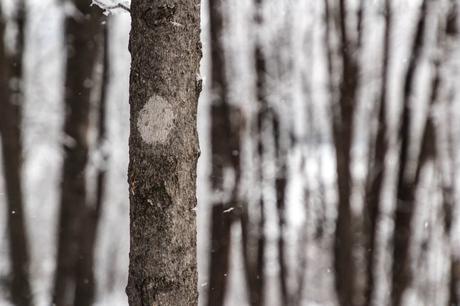Before this year, from December to March, I spent most of my adult life inside. During these months in Minnesota, where I live, high temperatures typically remain below freezing, and it’s not uncommon to wake up to a reading of below 0 degrees Fahrenheit, not counting “wind chill.”
Although I intentionally exercised several times per week, much of this time in previous years was passed in my gym where I watched old episodes of Friends while artificially bounding on an elliptical machine. This felt easier. When I considered going outside, images came to mind of my whole body shivering uncontrollably, my face becoming numb, my fingers and toes feeling like they might be seriously frostbitten, my nostril hairs freezing as I breathed in the cold, dry air.
With COVID-19 cases surging as we entered the winter months this year, I faced a clear choice: (1) continue the comfortable routine of previous years by working out inside my gym, knowing this would mean I would more likely contract and spread the virus, or (2) extend my summer and fall habits of exercising in the great outdoors. Favoring public health, I decided on the latter: I put my gym membership on temporary hold, and with some trepidation, I planned for a winter of outdoor adventure.
I’m now a few months into this new lifestyle. Some days, I walk or hike on paths near my home, aided by the most marvelous invention I never knew to keep myself from falling on the snow and ice: Yaktrax. Other days, when I have more flexibility in my schedule, I practice my classic ski technique at a local park or snowshoe along the pine tree-lined trails of my favorite local nature center. Weekends provide opportunities for more extended travel or adventure, such as half-day trips to formerly unexplored or underexplored Minnesota State Parks.
A few insights have been essential to making this work. First, I have new appreciation for the Scandinavian saying: “there’s no such thing as bad temperature, only bad clothing.” Although it was an investment, purchasing high-quality outdoor clothing from REI has been well worth it in terms of comfort in the cold. (There is a point where I “draw the line,” though, and for me that’s 0 degrees Fahrenheit, below which I move my body inside.) Most importantly, I’ve needed to shift my attitude toward winter. Inspired by recent psychological research by University of California – San Francisco researcher Virginia Sturm and colleagues – showing increased positive emotions and decreased emotional distress when individuals engage in regular “awe walks” – I’ve changed my focus from efficiency in exercise to getting lost in wonder as I look for what is vast, unexpected, and unique outside. If the conditions are right, I’ll also sometimes bring my camera to see if I can photograph some of the beauty around me.

Carpenter Nature Center, Hastings, Minnesota
" data-orig-size="1944,1296" sizes="(max-width: 1024px) 100vw, 1024px" data-image-title="84115765_10219312879546421_4144225566091902976_o" data-orig-file="https://thequestforagoodlife.files.wordpress.com/2020/03/84115765_10219312879546421_4144225566091902976_o.jpg" data-image-description="" data-image-meta="{"aperture":"0","credit":"","camera":"","caption":"","created_timestamp":"0","copyright":"","focal_length":"0","iso":"0","shutter_speed":"0","title":"","orientation":"0"}" data-medium-file="https://thequestforagoodlife.files.wordpress.com/2020/03/84115765_10219312879546421_4144225566091902976_o.jpg?w=300" data-permalink="http://thequestforagoodlife.com/photography-2/84115765_10219312879546421_4144225566091902976_o/" alt="" srcset="https://thequestforagoodlife.files.wordpress.com/2020/03/84115765_10219312879546421_4144225566091902976_o.jpg?w=1024 1024w, https://thequestforagoodlife.files.wordpress.com/2020/03/84115765_10219312879546421_4144225566091902976_o.jpg?w=150 150w, https://thequestforagoodlife.files.wordpress.com/2020/03/84115765_10219312879546421_4144225566091902976_o.jpg?w=300 300w, https://thequestforagoodlife.files.wordpress.com/2020/03/84115765_10219312879546421_4144225566091902976_o.jpg?w=768 768w, https://thequestforagoodlife.files.wordpress.com/2020/03/84115765_10219312879546421_4144225566091902976_o.jpg 1944w" class="wp-image-2964" data-large-file="https://thequestforagoodlife.files.wordpress.com/2020/03/84115765_10219312879546421_4144225566091902976_o.jpg?w=625" />Carpenter Nature Center, Hastings, MinnesotaThis morning, for instance, my wife and I strapped on our increasingly worn-in Yaktrax and explored some trails we hadn’t previously known at our nearest state park. At one point, we stopped to stare into the eyes of four deer who crossed our path. At another point, we tried to find the source of a bird’s song we didn’t recognize, and then, after finding the still unnamed bird, watched it fly overhead to sing to someone else. As we continued, we felt our spirits lifted as we were surprised to see snow starting to slowly float down, covering the trees and our path with a new, soft, puffy blanket of pure white.

In her best-selling and mesmerizing book, “Wintering,” Katherine May remarks how: “A surprising cluster of novels and fairy tales are set in the snow. Our knowledge of winter is a fragment of childhood, almost innate.” An emotional connection with winter runs deep for many of us, and yet it may often be personally unexplored. There is a sense of mystery and other-worldliness waiting to be found, providing new sources of awe and dare-I-say “magic” in “a winter wonderland.”
Like most everyone, I’m eager for our world to achieve “herd immunity” so COVID-19 can fade from consciousness and life can return back to “normal.” At the same time, I don’t want the same kind of normality as before. I want to retain lessons learned about how to live with more adventure and beauty in winter. As Outward Bound’s motto states: “If you can’t get out of it, get into it.”
I may have to permanently cancel my gym membership.
